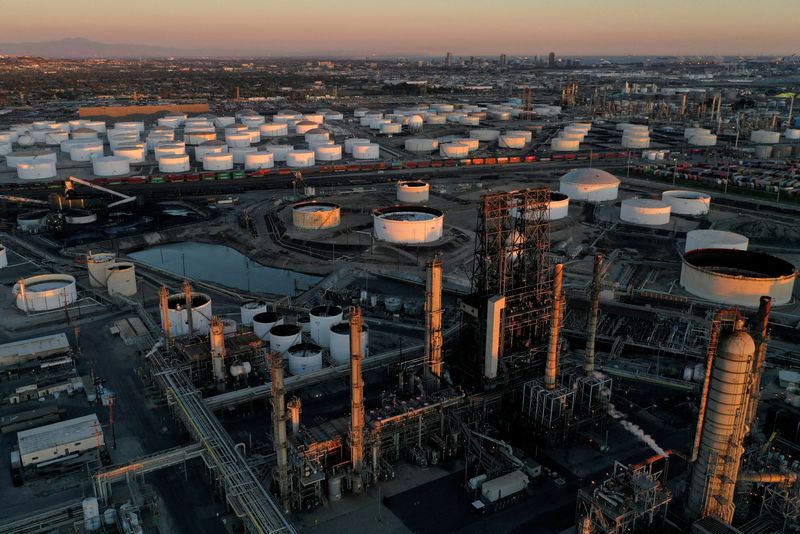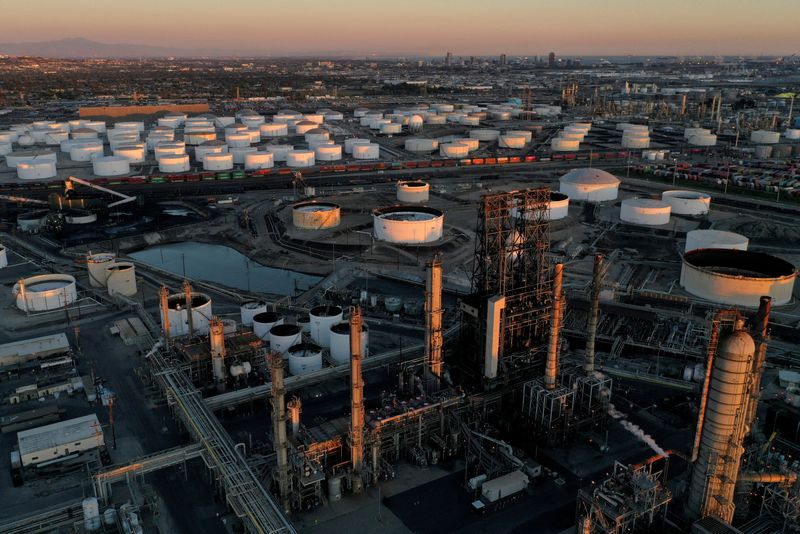Commodities
Oil prices steady amid falling US inventories, weak dollar

By Arunima Kumar
BENGALURU (Reuters) – Oil prices rose on Wednesday, a day after benchmark Brent hit a one-month low, as a decline in U.S. oil stockpiles and a weaker dollar overshadowed signs of weakening demand in China.
futures were up 55 cents, or 0.7%, at $84.28 a barrel by 1242 GMT. U.S. West Texas Intermediate crude futures were up 75 cents, or 0.9%, at $81.51.
In the United States, the world’s largest oil producer and consumer, crude oil inventories fell by 4.4 million barrels in the week ended July 12, market sources said, citing data from the American Petroleum Institute.
Analysts polled by Reuters estimated crude stocks would fall by 33,000 barrels. The U.S. Energy Information Administration will release its official storage report at 1430 GMT.
“The government data this afternoon is where the real story is, but the precursor of U.S. oil stocks in the API data does not exactly show much of an effect of Hurricane Beryl and the shutting down of some the infrastructure that stood in its path,” PVM Oil analyst John Evans said.
A weaker U.S. dollar also boosted oil prices. A softer U.S. dollar can boost demand for oil by making greenback-denominated commodities like oil cheaper for holders of other currencies.
Also supporting crude prices was rising geopolitical risk, said George Khoury, global head of education and research at CFI, adding that tensions in the Middle East and Europe could continue to fuel risks.
A Liberia-flagged oil tanker was assessing damage and investigating a potential oil spill after it was attacked by Yemen’s Houthis in the Red Sea, the Red Sea and Gulf of Aden Joint Maritime Information Center (JMIC) said on Tuesday.

Meanwhile, China, the world’s top oil importer, saw its economy grow 4.7% in the second quarter, official data showed earlier this week, the slowest growth since the first quarter of 2023, capping crude price gains.
“Any announcement from the Third Plenum in Beijing this week is likely to shape the market sentiment due to the size and importance of China’s oil demand growth,” said Rystad Energy’s senior oil analyst Svetlana Tretyakova referring to a key economic leadership meeting.
Commodities
Oil prices rise; U.S. crude inventories plunge, Russia-Ukraine truce eyed
Commodities
India’s Reliance to stop buying Venezuelan oil over US tariffs, sources say
Commodities
Oil prices climb on Venezuela supply worries

 Forex3 years ago
Forex3 years agoForex Today: the dollar is gaining strength amid gloomy sentiment at the start of the Fed’s week

 Forex3 years ago
Forex3 years agoUnbiased review of Pocket Option broker

 Forex3 years ago
Forex3 years agoDollar to pound sterling exchange rate today: Pound plummeted to its lowest since 1985

 Forex3 years ago
Forex3 years agoHow is the Australian dollar doing today?

 Cryptocurrency3 years ago
Cryptocurrency3 years agoWhat happened in the crypto market – current events today

 World3 years ago
World3 years agoWhy are modern video games an art form?

 Commodities3 years ago
Commodities3 years agoCopper continues to fall in price on expectations of lower demand in China

 Economy3 years ago
Economy3 years agoCrude oil tankers double in price due to EU anti-Russian sanctions



























